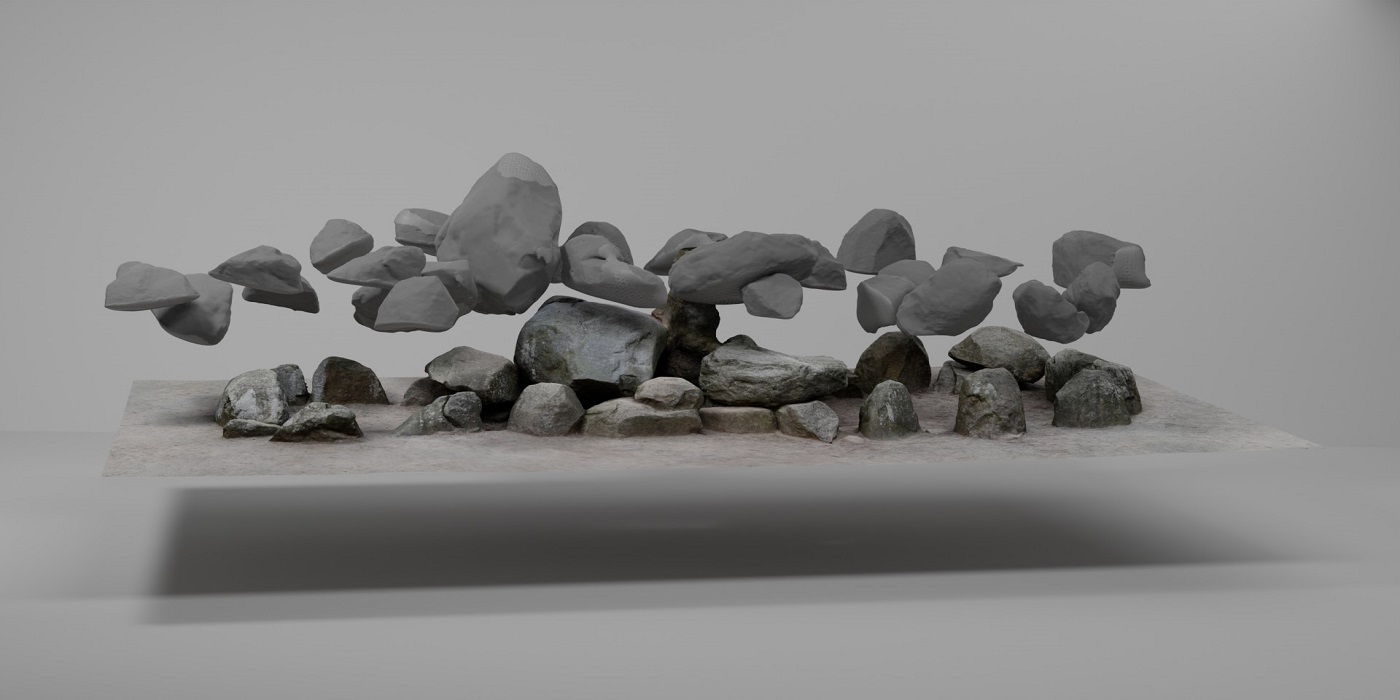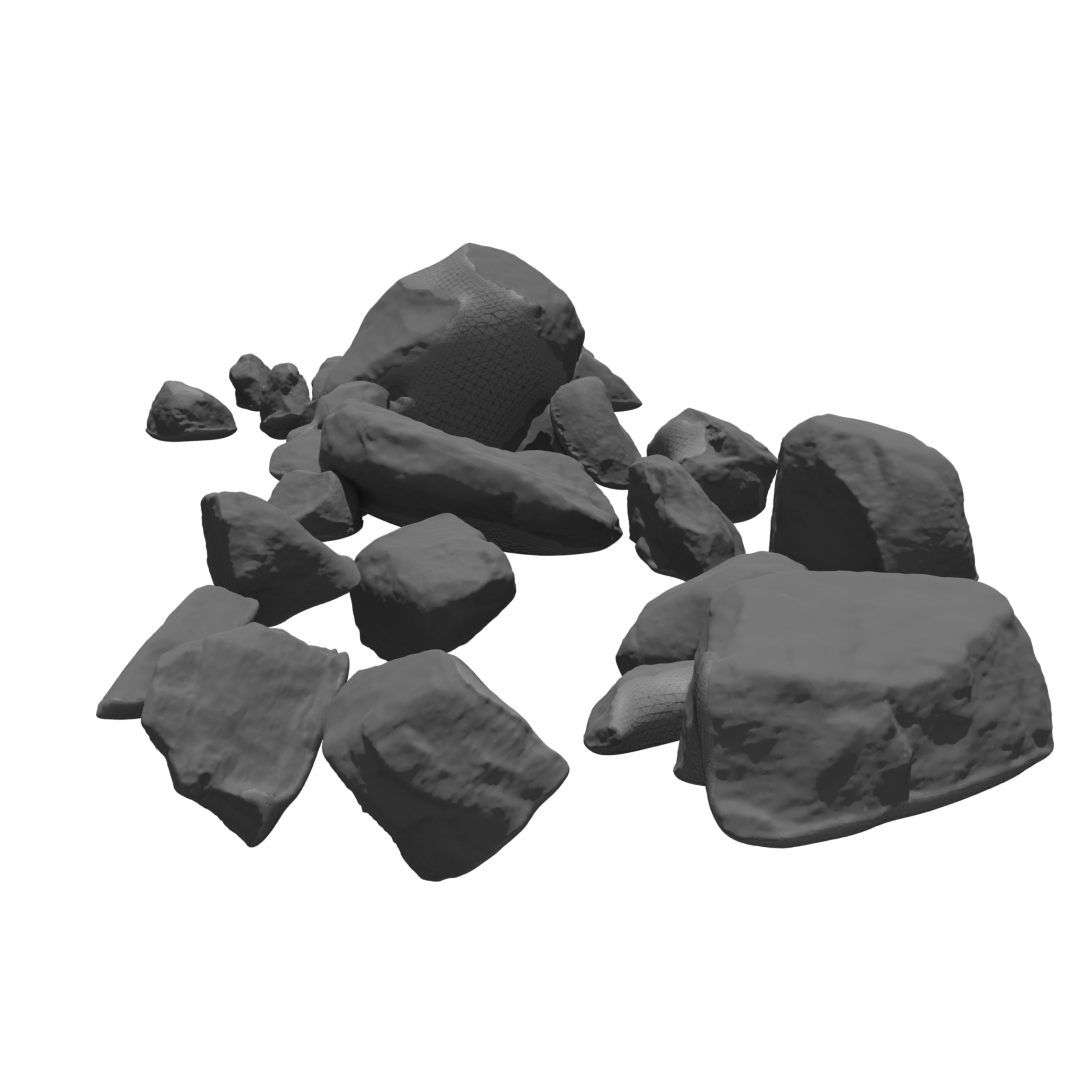

The megalithic passage grave Düwelsteene is one of the most southwestern graves of the Funnel Beaker culture
still in existence. Through ceramic finds and radiocarbon dating of a skull fragment found in the grave, the
utilization of the grave can be dated from 3300 BC to 2600 BC.
In 1932 after excavations under archaeological supervision, the grave was restored to the
appearance it was thought to have had at the time. While moving the
stones made the passage grave look composed and gave visitors an idea how the grave could have looked, it also
now makes it harder to digitally reconstruct the passage grave, because the megalithic stones are not
in their in situ placement anymore.
This website was built as a supplement for a master's thesis in Archaeoinformatics at the University of Cologne.

On this website, archaeology enthusiasts and researchers can virtually view the Düwelsteene as a 3D model in the state in which the megalithic tomb is found today. The stones of the tomb are also visible as a 3D reconstruction, presumably as they were positioned before the 1932 restoration. Another virtual reconstruction shows the megalithic tomb of the Funnel Beaker Culture as it might have looked around 3000 B.C.

Video showing the changes over time and how the megalithic tomb Düwelsteene was built
Directions to the megalithic tomb, information about the restoration of the tomb in 1932 and the current 3D digitizations by the Altertumskommission für Westfalen (LWL), information about the excavation history, as well as tales about the origin of the megalithic tomb and the origin of the name Düwelsteene.
AboutThis website visualizes the history of the Düwelsteene and is designed for the digital reconstructions of this megalithic tomb. Would you like to tell me your opinion about the website? Your feedback helps me to improve the website in form and content! To support you, I have provided a feedback form, which you are welcome to use. Thank you very much!
Feedback